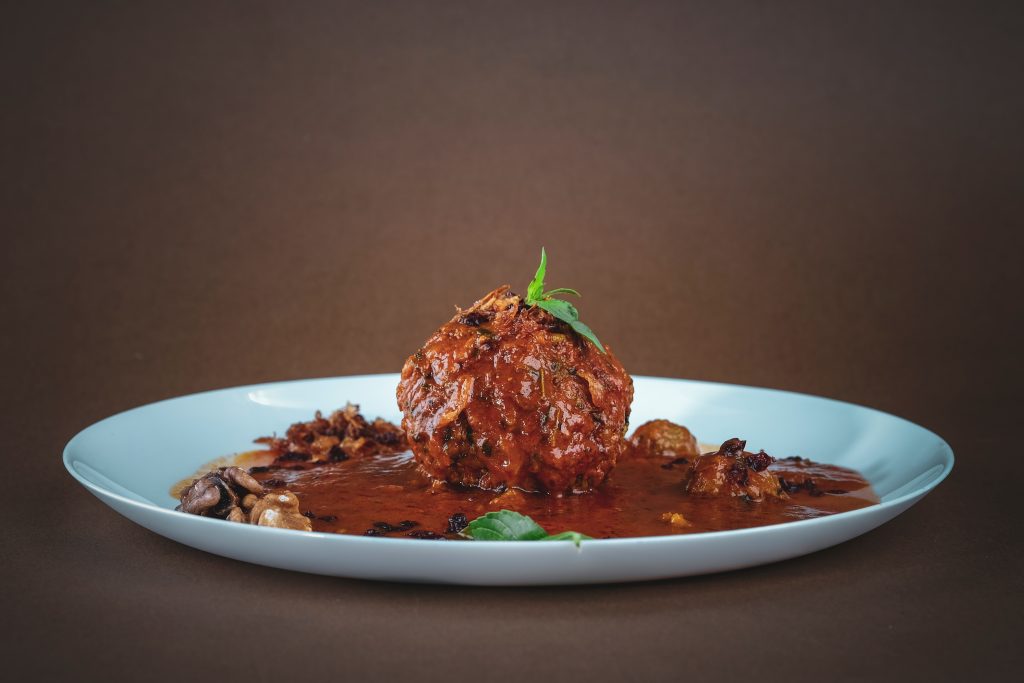Lab-Grown Meatballs Being Made From Ancient Woolly Mammoth DNA
Australian startup Vow created a lab-grown meatball made partially from the DNA of a woolly mammoth.
This article is more than 2 years old

Imagine biting into a mouthwatering meatball from a source that has been extinct for thousands of years. Vow, an Australian company, intends to make this scenario a reality with its latest product, a lab-grown meatball made from the DNA of the woolly mammoth. Vow’s ambitious project aims to build a symbol of a more vibrant and sustainable future with the help of the latest biotechnology.
Cultivated meat, such as the lab-grown mammoth meatball, is hailed as the future of cuisine. Food scientists worldwide are interested in lab-grown meatballs made from ancient woolly mammoth DNA because they are an innovative step toward a more sustainable and ethical food future. According to abc7ny.com, Vow, has developed a meatball based on the DNA code of a long-extinct pachyderm.
The lab-grown meatball project proposes to get people talking about the future of food and the “mammoth” potential of cultivated meat to make more sustainable foods, reduce the impact of our current food system on the climate, and free up land for less intensive farming. Vow used genetic information about the mammoth that was available to the public, filled in the gaps with genetic material from the African elephant, the mammoth’s closest living relative, and put it in a sheep cell. This is a crucial step forward for food production in the future since this technology has the potential to make global meat production much less harmful to the environment in the next few years.
The Good Food Institute’s science and technology manager, Seren Kell, believes that this project will spark new discussions about the future of food and how cultivated meat has the potential to revolutionize the way we eat. Numerous companies worldwide are striving to develop pasture-raised meat products, including Vow. They hope to create a symbol of a brighter and more moral future with their new way of making food.
The jumbo-mammoth meatball was showcased as a spectacle in Amsterdam. It was slow-baked, then finished with a blowtorch on the exterior to generate a delightful scent. Surprisingly, the fragrance was comparable to an earlier crocodile-based prototype.
In a quote to the AP, Tim Noakesmith, founder of Australian startup Vow, said this regarding his creation, “So, super fascinating to think that adding the protein from an animal that went extinct 4,000 years ago gave it a unique and new aroma, something we haven’t smelled as a population for a very long time.”
Would you consume food made in a laboratory?
In a report by LabioTech, Chris Bryant, a University of Bath researcher who studies cultural meat acceptability, believes that cultural acceptance may be determined by what the product is, how it is made, how thoroughly it is examined, and how independently it is investigated. On the other hand, most traditional meat products are unnatural. Many factory-farmed animals are pumped full of hormones and antibiotics, fed a diet very different from what they would eat in the wild, and treated in unimaginable ways.
However, the verdict on lab-grown meatballs and other foods is still out, with some detractors pointing out that proponents of the technology sound similar to early supporters of GMOs.
In the meantime, the woolly mammoth lab-grown meatball initiative is an intriguing outlier in the new meat agriculture sector, primarily focused on traditional animals. Despite the promise of cultured meat, only Singapore has legalized cell-based meat. Yet, if extensively used, the method has the potential to significantly reduce the environmental impact of global meat production in the future.




